| |
|
|
30.
| The Year Zero |
| |

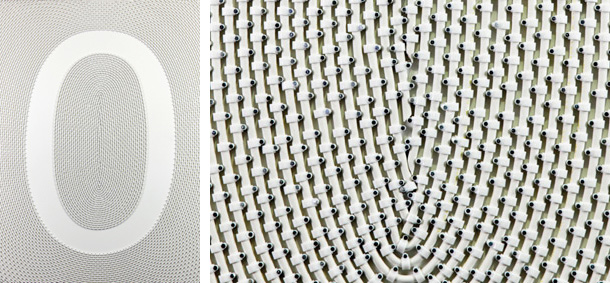
2012, serie of 9 unique pieces, coaxial antenna cable and staples, 120 x 160 cm.
Exhibition view from Oriental Accident, Jane Lombard, 2012, New York.
Courtesy of the artist and Piero Atchugarry, Miami.

2012, serie of 9 unique pieces, coaxial antenna cable and staples, 120 x 160 cm.
Courtesy of the artist and Ceysson & Bénétière, Paris.
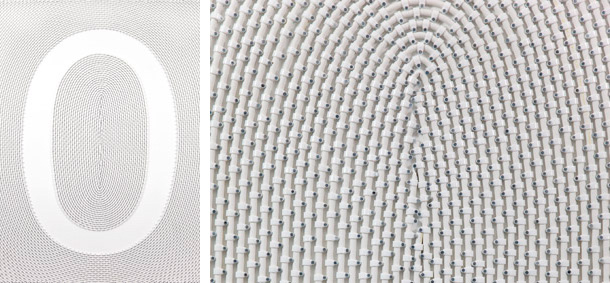
2012, serie of 9 unique pieces, coaxial antenna cable and staples, 120 x 160 cm.
Courtesy of the artist and Ceysson & Bénétière, Paris.
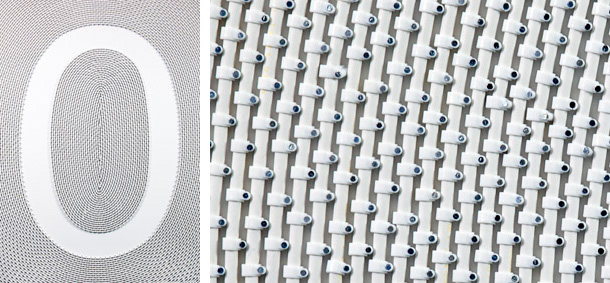
2012, serie of 9 unique pieces, coaxial antenna cable and staples, 120 x 160 cm.
Courtesy of the artist and Ceysson & Bénétière, Paris.
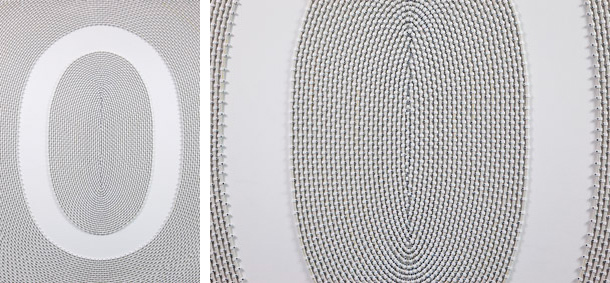
2012, serie of 9 unique pieces, coaxial antenna cable and staples, 120 x 160 cm.
Courtesy of the artist and Ceysson & Bénétière, Paris.
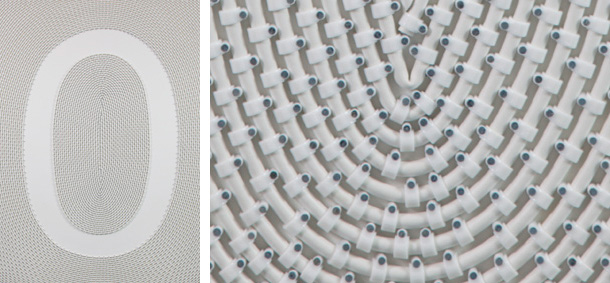
2012, serie of 9 unique pieces, coaxial antenna cable and staples, 120 x 160 cm.
Courtesy of the artist and Ceysson & Bénétière, Paris.
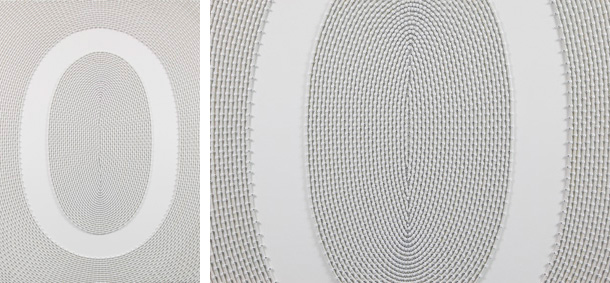
2012, serie of 9 unique pieces, coaxial antenna cable and staples, 120 x 160 cm.
Courtesy of the artist and Ceysson & Bénétière, Paris.
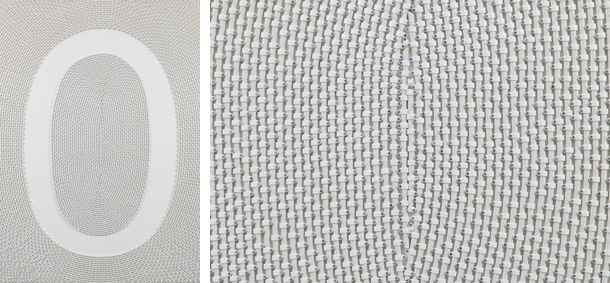
2012, serie of 9 unique pieces, coaxial antenna cable and staples, 120 x 160 cm.
Courtesy of the artist and Ceysson & Bénétière, Paris.
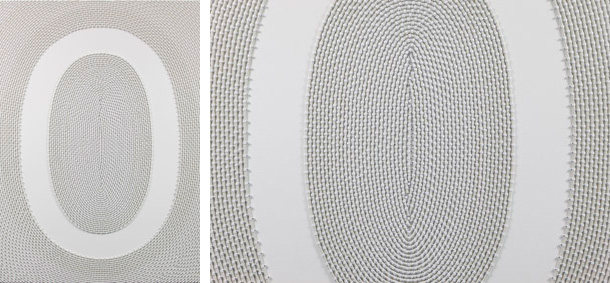
2012, serie of 9 unique pieces, coaxial antenna cable and staples, 120 x 160 cm.
Courtesy of the artist and Ceysson & Bénétière, Paris.
'' The Year Zero aims to catch the viewer’s eye and attention while at the same time imposing itself as a spatial and temporal reference: it resets all counters to zero. ''
Studio Fatmi, April 2017

The Year Zero
Exhibition view from Whispered Stories of Forgotten Wires, Piero Atchugarry Gallery, 2023, Miami.
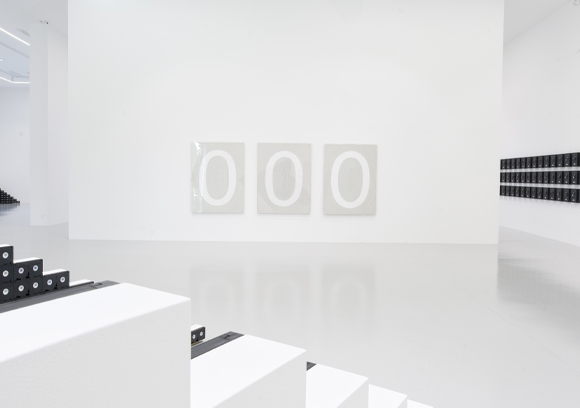
The Year Zero
Exhibition view from How Much is Enough, Ceysson & Bénétière, 2022, Saint-Etienne.
|
|
|
|
|
| Collection of Morocco Permanent Art Collection, Embassy, Rabat
L’année Zéro, série de neuf sculptures affichant un "0" en graphie arabe de près d'1,60 m sur 1,20m, permet difficilement de passer à côté sans la voir. La taille des compositions et leur symbolisme évident attirent le regard et s'offrent à une reconnaissance quasi immédiate. L’œuvre est composée à l'aide de câbles d’antennes coaxiaux à gaine blanche épinglés à un panneau de bois blanc au moyen d'attaches à têtes rondes. Les câbles blancs sont disposés en ondes circulaires parallèles, s'agrandissant depuis le centre de la composition vers l'extérieur, et s'organisant autour d'un espace non recouvert en forme de "0".
L'année Zéro évoque les mouvements collectifs des Printemps Arabes et les bouleversements politiques qui les accompagnent. L'œuvre traite cette dynamique sociale comme un ensemble et explore sa nature et son organisation. L'Année Zéro, s'attache ainsi à observer les effets immédiats des Printemps et tente également de leur assigner une place dans l'histoire des pays arabes.
La grille de lecture constituée par l'œuvre croise les influences et les techniques artistiques, allant de la typographie des affichages, aux procédés du Groupe Zéro, dont l'ambition, au début des années soixante, et après les bouleversements de la seconde guerre mondiale, était de susciter un renouveau artistique et social, en offrant une vision positive du monde. A leur suite, Mounir Fatmi réemploie le signe mathématique, dans une perspective à la fois structurelle et historique. Les procédés cités plus haut sont également réactualisés avec l'emploi des câbles d’antennes coaxiaux. Ceux-ci servent de matériau dans des mises en scène de processus collectifs, tels que les croyances ("Qui a besoin d'un Dieu Triangle ?", 2013), la médiatisation ("Al Jazeera", 2004-2007) ou la société de consommation ("500 mètres de silence", 2005), entre autres.
L'Année Zéro a l'expressivité des affiches futuristes et comme celles-ci, elle se veut affirmation d'une avant-garde et d'un mouvement précurseur. L'œuvre fait impression sur le spectateur et lui communique en même temps l'énergie du mouvement social. Une énergie qui se transmet d'individus en individus et qui semble se propager dans les sociétés en détournant les canaux de communication modernes et leurs techniques de transmission et de diffusion de l'information.
Dans certaines des réalisations de Mounir Fatmi, les câbles coaxiaux composent une multitude de formes géométriques qui brouillent les repères et compliquent la lecture de l'œuvre. Dans L'Année Zéro, au contraire, la lisibilité est totale et la visibilité accrue par le système des cercles concentriques. L'Année Zéro veut attirer le regard, interpeler le spectateur, tout en s'imposant comme référence spatiale et temporelle : elle remet les compteurs à zéro. L'œuvre s'affirme comme une lecture de l'histoire qui fait des Printemps Arabes une date historique, destinée à marquer les consciences et les mémoires : l'origine d'une nouvelle forme d'organisation sociale.
Studio Fatmi, Avril 2017
|
|
The Year Zero, a series of nine sculptures exhibiting a “0” written in Arabic with dimensions of nearly 1.6m by 1.2m, is hard to pass by without being noticed. The size of the compositions and their evident symbolism catch the eye and are met with nearly instantaneous recognition. The work is made of coaxial antenna cables in white sheathing, pinned to a white wood panel using rounded tacks. The white cables are arranged in circular parallel waves, growing larger from the center of the composition to the outside and organized around a space left empty in the shape of a “0”.
The Year Zero alludes to the collective movement of the Arab Spring and the political shifts that accompanied it. The work considers this social dynamic as a whole and explores its nature and its organization. The Year Zero aims to observe the immediate effects of the Arab Spring and attempts to give it its own place in the history of Arab countries.
The interpretative framework provided by this work combines various artistic influences and techniques, ranging from poster typography to the methods of the Zero Group whose ambition, in the early 1960s and in the wake of the devastations of WWII, was to spark off an artistic and social renewal by offering a positive outlook on the world. Following their legacy, Mounir Fatmi employs the same mathematical sign with a perspective that is both structural and historical. The methods mentioned above are also reinterpreted with the use of coaxial cable. They are the main material in various representations of collective processes such as faith (“Who needs a Triagular God?” 2013), media exposure (“Al Jazeera”, 2004-2007) or the consumer society (“500 Meters of Silence”, 2005), among others.
The Year Zero has the expressiveness of futuristic posters, and like them, it aims to be the affirmation of an avant-garde and a precursory movement. The work strikes the viewer’s imagination and at the same time communicates the energy of social movements. An energy that is transmitted from individual to individual and that seems to propagate within societies by twisting modern communication channels and their means of transmitting and propagating information.
In some of Mounir Fatmi’s creations, coaxial cables form a multitude of geometrical shapes that confuse reference points and complicate their interpretation. In the Year Zero, on the contrary, there is absolute legibility and the visibility is accentuated by the network of concentric circles. The Year Zero aims to catch the viewer’s eye and attention while at the same time imposing itself as a spatial and temporal reference: it resets all counters to zero. The work affirms itself as an interpretation of history that makes the Arab Spring an historical date, destined to leave a trace in collective consciences and memories: the origin of a new form of social organization.
Studio Fatmi, April 2017.
|
|
|
|